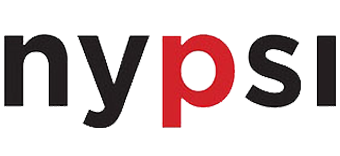210: Neuropsychoanalytic Explorations
Instructors
Andrew Rosendahl, M.D., Ph.D.
Rebecca Twersky, M.D.
May 6 – June 24, 2024
Mondays, 8:35 – 10:00 pm
No class: 5/27
Co-requisites
Candidates must have at least one case in supervised psychoanalysis to be eligible to take second year courses.
Course Description
This course explores the interface between psychoanalysis and neuroscience known as Neuropsychoanalysis (NPSA). It begins with a discussion about the history and controversy surrounding NPSA and the incorporation of biological science into psychoanalysis. From this vantage point candidates will examine Solms’ theory of the conscious ID as a prototype for investigations into NPSA. Next the class explores contemporary topics in NPSA including Pankseppian affective neuroscience, predictive coding & the Bayesian Brain, the default mode network, Kahneman’s work regarding human choices, judgements and more. The seven class course ends with an eye to the future in the use of psychedelics in mind, meaning and potentially in psychoanalysis. Second and third year students combined. This course alternates with 307.
Course Objectives
After attending this course, participants should be able to:
1. describe the areas of overlap and mutual support as well as contradictions between psychoanalysis and neuroscience.
2. explain dual aspect monism and in particular how Freud’s “mental apparatus” helps articulate a psychoanalytic view of consciousness.
Evaluation Method
Each student’s participation in class discussion and his or her demonstration of understanding of the course objectives and reading material is assessed in a written evaluation by the instructor(s).
These articles are protected under relevant copyright regulations. They are available in the New York Psychoanalytic Society & Institute Electronic Reserve for your convenience, and for your personal use.
READINGS ARE CONFIRMED.
I. INTRODUCTION: Where Mind and Psychoanalysis meet Science
CLASS 1: May 6, 2024
REQUIRED READINGS
Christian E. Salas & Santiago J. Palmer-Cancel (2019). Neuropsychoanalysis 20 years later: An interview with Oliver Turnbull, Neuropsychoanalysis, 21:1, 39-45.
Blass, R., Carmeli, Z. (2015). Further Evidence for the Case Against Neuropsychoanalysis, Int J Psychoanal, 96:1555-1573.
Solms, M. (2021). Revision of Drive Theory. Journal of the American Psychoanalytic Association, 69:1033-1091. [Read pp. 1033-1046 for this class]
II. Drive and its Relationship to the Pleasure Principle
CLASS 2: May 13, 2024
REQUIRED READINGS
Solms, M. (2021). Revision of Drive Theory. Journal of the American Psychoanalytic Association, 69:1033-1091. [Link Above. Read pp. 1047-1055 for this class]
Solms, M. (2013). The Conscious Id. Neuropsychoanalysis, 15(1):5-19.
III. Predictive Networks: Entropy and its Relationship to Drive
CLASS 3: May 20, 2024
REQUIRED READINGS
Solms, M. (2021). Revision of Drive Theory. Journal of the American Psychoanalytic Association, 69:1033-1091. [Link Above. Read pp. 1055-1061 for this class]
Friston, K. (2010). The default-mode, ego-functions and free-energy: a neurobiological account of Freudian ideas. Brain, 133:1265-1283.
SUPPLEMENTAL
Free Energy Principle-Karl Friston
IV. Drive Sources and the Pankseppian Emotional Systems
CLASS 4: June 3, 2024
REQUIRED READINGS
Solms, M. (2021). Revision of Drive Theory. Journal of the American Psychoanalytic Association, 69:1033-1091. [Link Above. Read pp. 1061-1080 for this class]
The Science of Emotions: Jaak Panksepp at TEDxRainier
Rats Laugh When You Tickle Them
V. Drive and Its Relationship to the Conscious/Unconscious
CLASS 5: June 10, 2024
REQUIRED READINGS
Solms, M. (2021). Revision of Drive Theory. Journal of the American Psychoanalytic Association, 69:1033-1091. [Link Above. Read pp. 1080-1087 for this class]
TBA
VI. Clinical Implications of Solms’ Model of Mind
CLASS 6: June 17, 2024
Guest Instructor: Mark Solms, Ph.D.
REQUIRED READINGS
TBA
VII. Future Directions: Psychedelics
CLASS 7: June 24, 2024
REQUIRED READINGS
TBA
